EPJ D Highlight - Patterns of interfering massive particles
- Details
- Published on 26 February 2014
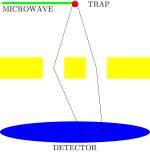
A new study represents a step forward in our understanding of the nature of exchange interactions between identical particles, which only occur at the quantum level
Two-particle interference has been the focus of many studies, specifically in quantum optics with photons. However, interference between two massive, identical particles is not so well understood. In a study published in EPJ D, Pedro Sancho from the CLPU—Centre for Pulsed Lasers—in Salamanca, Spain, uncovers a counterintuitive result whereby particles called bosons do not behave as expected—they are overlapping, and not interfering—due to the combination of interference and so-called exchange interaction. The latter is a quantum mechanical effect that alters their symmetry when identical particles are exchanged.
EPJ D Highlight - How hypergravity impacts electric arcs
- Details
- Published on 16 December 2013
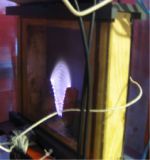
A new study focused on electric discharge behaviour under intense gravitational forces shows that its dynamic changes as gravity increases
Arc discharges are common in everyday conditions like welding or in lightning storms. But in altered gravity, not as much is known about the behaviour of electric discharges. For the first time, Jiří Šperka from Masaryk University, Czech Republic, and his Dutch colleagues studied the behaviour of a special type of arc discharge, so-called glide arc, in varying hypergravity conditions, up to 18 G. In a paper just published in EPJ D, they demonstrate how the plasma channel of this glide arc discharge moves due to external forces of buoyancy in varying gravity conditions. These results could have implications for improved safety precautions in manned space flights, and in the design of ion thrusters used for spacecraft propulsion.
EPJ D Highlight - Sharpening the focus in quantum photolithography
- Details
- Published on 11 December 2013
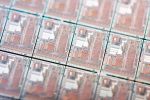
A new protocol, exploiting the quantum properties of materials, makes it possible to improve the accuracy of photolithography by addressing its physical limitations due to diffraction
Photolithography uses light beams to design thin geometric patterns on the substrates of semiconductors used in microelectronic devices. This is achieved using a chemical reaction on a light-sensitive chemical, called photoresist. The trouble is that the phenomenon of light diffraction does not permit highly accurate patterns. Often, the edges of stripes have low contrast, the distances between the stripes and the stripes’ width are limited by what is referred to as Rayleigh’s diffraction limit. Now, a scientist from Russia has developed a quantum lithography protocol designed to improve the resolution of this technology. The findings of George Miroshnichenko, a physicist at Saint-Petersburg National Research University of Information Technologies, Mechanics and Optics, in Russia, have just been published in EPJ D.
EPJ D Colloquium - No qualms about quantum theory
- Details
- Published on 19 November 2013

The alleged shortcomings of quantum theory do not hold up to scrutiny, as the theory proves sound for the prediction of probability of events connected to the fate of sub-atomic scale particles
A colloquium paper published in EPJ D peers into the alleged issues associated with quantum theory. Berthold-Georg Englert from the National University of Singapore reviews a selection of the potential problems of the theory. In particular, he looks into cases when mathematical tools are confused with the actual observed sub-atomic scale phenomena they are describing. Such tools are essential to provide an interpretation of the observations, but cannot be confused with the actual object of studies.
EPJ D Highlight - Uniformity: the secret of better fusion ignition
- Details
- Published on 07 October 2013

Fusion is one of the holy grails of energy production. Now, theoretical physicists have used simulations to investigate the uniformity of irradiation at the ignition stage of thermonuclear fusion reaction.
One of the ways to achieve thermonuclear fusion is through a controlled reaction between two light variants of hydrogen, called deuterium and tritium. Mauro Temporal, from the École Normale Supérieure Cachan, in France, and colleagues have made theoretical calculations indicating how best to improve the ignition stage of fusion reaction. Their approach, described in a paper published in EPJ D, involves increasing the uniformity of irradiation using high-power laser beams on the external shell of a spherical capsule containing a mix of deuterium and tritium.
EPJ D Colloquium - Modelling low energy electron and positron tracks in biologically relevant media
- Details
- Published on 27 September 2013

This EPJD colloquium describes an approach whereby the effect of low and intermediate energy (0-100 eV) electrons and positrons can be incorporated into radiation damage models, in particular the deceleration of these particles in biologically-relevant materials (water and representative biomolecules). At the heart of the modelling procedure is a C++ computer program called Low Energy Particle Track Simulation (LEPTS), which is compatible with commonly available general purpose Monte Carlo packages. Input parameters are carefully selected from theoretical and experimental cross-section data and energy loss distribution functions.
EPJ D Highlight - Pulsating dust cloud dynamics modelled
- Details
- Published on 17 September 2013
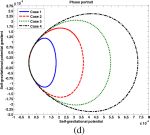
New research outlines a new design of spatio-temporal models of astrophysical plasmas
The birth of stars is an event that eludes intuitive understanding. It is the collapse of dense molecular clouds under their own weight that offers the best sites of star formation. Now, Pralay Kumar Karmakar from the Department of Physics at Tezpur University, Assam province, India, and his student have proposed a new model for investigating molecular clouds fluctuations at sites of star formation and thus study their pulsational dynamics, in a paper just published in EPJ D.
EPJ D Highlight - Novel beams made of twisted atoms
- Details
- Published on 01 August 2013
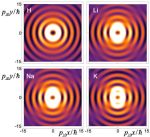
Scientists can now theoretically construct atomic beams of a particular kind, opening the door for applications in fields like quantum communication.
Physicists have, for the first time, now built a theoretical construct of beams made of twisted atoms. These findings are about to be published in EPJ D by Armen Hayrapetyan and colleagues at Ruprecht-Karls-University Heidelberg in Germany. These so-called atomic Bessel beams can, in principle, have potential applications in quantum communication as well as in atomic and nuclear processes.
EPJ D Highlight - The key to ion beams’ polarisability
- Details
- Published on 22 July 2013
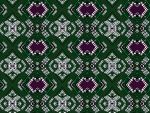
Polarisability for series of multi-electron ions is now available
Polarisability determines the force with which an inhomogeneous external electric field acts on the ions of an ion beam. However, it can be quite tricky to obtain accurate values for this force. Now, two German theoretical chemists, Volker Koch from Bielefeld University and Dirk Andrae from the Free University Berlin, have devised formulas providing the polarisability of atomic ions as a function of their total charge number. Their findings, about to be published in EPJ D, have implications for many applications, ranging from the use of ion beams for research purposes or as a source for dopant atoms in semiconductor manufacturing to the modelling of planetary and stellar atmospheres.
EPJ D Highlight - Elucidating energy shifts in optical tweezers
- Details
- Published on 15 May 2013
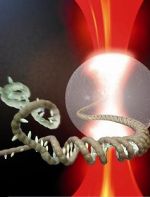
Physicists are providing an all-in-one guide to help calculate the effect the use of optical tweezers has on the energy levels of atoms under study
A small piece of paper sticks to an electrically charged plastic ruler. The principle of this simple classroom physics experiment is applied at the microscopic scale by so-called optical tweezers to get the likes of polystyrene micro-beads and even living cells to “stick” to a laser beam, or to trap atoms at ultra-low temperatures. Physicist Fam Le Kien and his colleagues from the Institute of Atomic and Subatomic Physics of the Vienna University of Technology, Austria, provide a comprehensive manual with general theoretical tools, definitions, and spectroscopic data sets for calculating the energy levels of atoms, which are modified by light emanating from optical tweezers, in a study just published in EPJ D.





